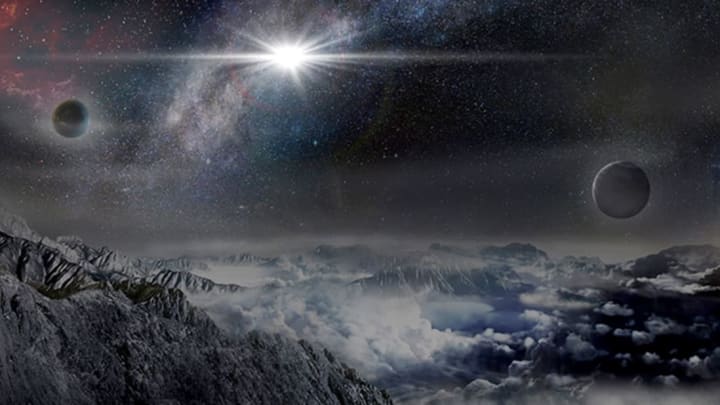There is a thing in space that's 10 miles in diameter and powering an explosion 20 times brighter than every star in the Milky Way galaxy—combined. The explosion is thought to be a "superluminous supernova" and has been designated ASAS-SN-15lh. It is 200 times brighter than a typical supernova and 570 billion times brighter than the Sun. Details of the phenomenon were published today in Science.
ASAS-SN-15lh (the first part is pronounced "assassin") doubles the previous record for brightest known supernova. It was discovered by scientists with the All Sky Automated Survey for SuperNovae (ASAS-SN) project. Based at Ohio State University, the project involves the combined efforts of scientists and telescopes around the world. According to its website, ASAS-SN's goal is to "automatically survey the entire visible sky every night down to about 17th magnitude, more than 25,000 times deeper than human eye."
MAGNETAR THE TERRIBLE
A supernova is a star that explodes and emits a tremendous amount of light. (Don't worry, though—our Sun lacks the mass to go supernova. Instead, in about 7.5 billion years it'll become a red giant, shed its skin, and form a nebula. In the process, it will erase our planet from the universe.) A star that has gone supernova collapses in on itself and can form a neutron star.
A magnetar is an extremely rare, spinning neutron star with a massively strong magnetic field. They are thought to power superluminous supernovae like the one just discovered. Because of the immensity of ASAS-SN-15lh, however, scientists are scratching their heads. “It takes a lot of energy to shine that bright, and that energy has to come from somewhere,” said Krzysztof Stanek, co-principal investigator of the ASAS-SN team. "If it really is a magnetar, it’s as if nature took everything we know about magnetars and turned it up to 11."
According to lead author Subo Dong, “The honest answer is at this point that we do not know what could be the power source for ASASSN-15lh." A magnetar of this strength tests the limits of the laws of physics: “The explosion’s mechanism and power source remain shrouded in mystery because all known theories meet serious challenges in explaining the immense amount of energy ASASSN-15lh has radiated.”
Below, you can see before-and-after pseudo-color images showing, at left, the host galaxy before the explosion of ASASSN-15lh, taken by the Dark Energy Camera (DECam); and at right, the supernova, captured by the Las Cumbres Observatory Global Telescope Network (LCOGT) 1-meter telescope network.

The Dark Energy Survey, B. Shappee and the ASAS-SN team
SUPERLUMINOUS BEINGS
Superluminous supernovae are a relatively new discovery. Observers have been noting the appearance of supernovae for 2000 years, but have only observed this super-bright variety for 20. Even though they're much brighter than average supernovae, they're much harder to find, as they usually spawn in dim, distant galaxies with high rates of star formation.
ASAS-SN-15lh is 3.8 billion light-years away, but its galaxy isn't all that dim, which compounds the mystery. (In fact, the galaxy is brighter than our own.) Scientists hope that by determining what's at the heart of ASAS-SN-15lh they will be able to search for others like it.
The team studying ASAS-SN-15lh has been granted time on the Hubble Space Telescope for later this year. A closer look at the phenomenon and its surrounding galaxy should help unlock the nature of its power source. “ASASSN-15lh may lead to new thinking and new observations of the whole class of superluminous supernova," said Dong, "and we look forward to plenty more of both in the years ahead.”
